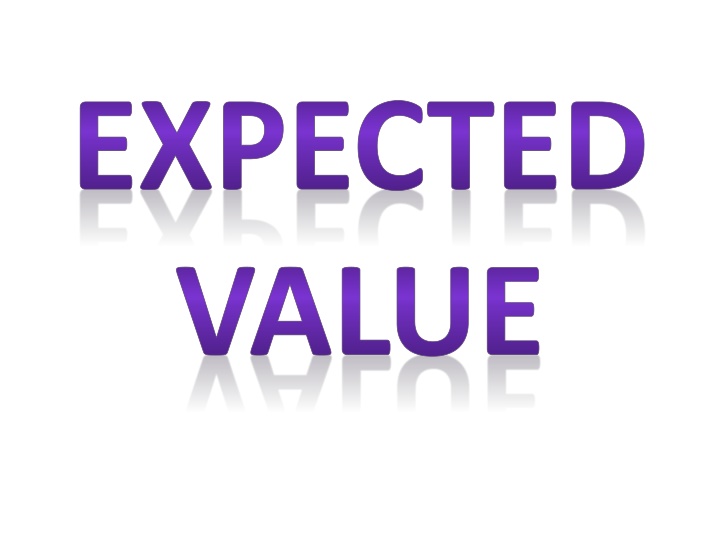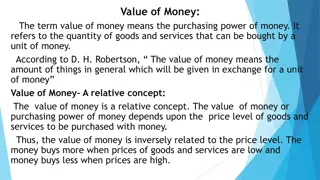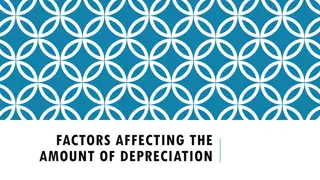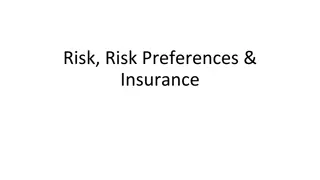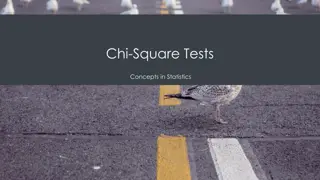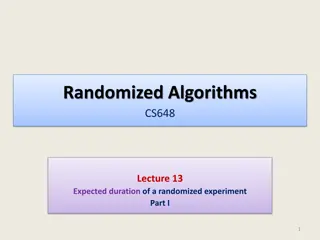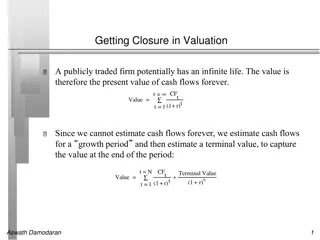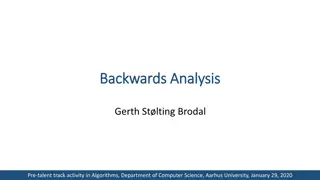EXPECTED VALUE
Learn how to predict average winnings in games of chance using expected value. Examples with coins, dice, and bills help illustrate this statistical concept. Expected value indicates the amount a player can expect to win or lose after multiple plays of a game.
Download Presentation

Please find below an Image/Link to download the presentation.
The content on the website is provided AS IS for your information and personal use only. It may not be sold, licensed, or shared on other websites without obtaining consent from the author.If you encounter any issues during the download, it is possible that the publisher has removed the file from their server.
You are allowed to download the files provided on this website for personal or commercial use, subject to the condition that they are used lawfully. All files are the property of their respective owners.
The content on the website is provided AS IS for your information and personal use only. It may not be sold, licensed, or shared on other websites without obtaining consent from the author.
E N D
Presentation Transcript
EXPECTED VALUE
Take out a coin! You win 4 dollars for heads, and lose 2 dollars for tails.
How could we predict what you would win on average? Half the time, you ll win 4 dollars. Half the time, you ll lose 2 dollars.
Expected Value Since you d win $1 on average, it s the value you could expect to win after playing over and over Expected Value: The value is what the player can expect to win or lose if they were to play a game many times.
Example 1 A die is rolled. You receive $1 for each dot that shows. What is the expected value for the game?
Example 2 A $20 bill, two $10 bills, three $5 bills and four $1 bills are placed in a bag. If a bill is chosen at random, what is the expected value for the amount chosen?
Example 3 In a game, you flip a coin twice, and record the number of heads that occur. You get 10 points for 2 heads, zero points for 1 head, and 5 points for no heads. What is the expected value for the number of points you ll win per turn? (Hint: List every outcome.)
Example 4: Your Turn! Find the expected value (or expectation) of the games described. Mike wins $2 if a coin toss shows heads and $1 if it shows tails. Jane wins $10 if a die roll shows a six, and she loses $1 otherwise. A coin is tossed twice. Albert wins $2 for each heads and must pay $1 for each tails.
Example 4: Solutions Mike wins $2 if a coin toss shows heads and $1 if it shows tails $1.50 Jane wins $10 if a die roll shows a six, and she loses $1 otherwise $0.83 A coin is tossed twice. Albert wins $2 for each heads and must pay $1 for each tails. $1.00
